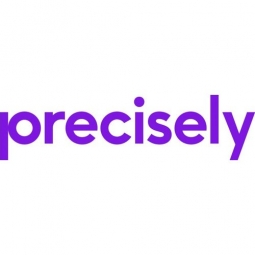公司规模
Large Corporate
地区
- America
国家
- United States
产品
- Ironstream for Splunk
- Splunk Enterprise
技术栈
- Data Ingestion
- Mainframe Operations Data
实施规模
- Enterprise-wide Deployment
影响指标
- Cost Savings
技术
- 分析与建模 - 数据即服务
- 应用基础设施与中间件 - 数据交换与集成
适用功能
- 商业运营
用例
- 监管合规监控
服务
- 系统集成
关于客户
The customer in this case is a U.S. state agency responsible for providing workforce-development assistance to employers and job seekers. This agency plays a crucial role in handling unemployment benefit payments, which involves monitoring for erroneous or fraudulent payments. The agency is tasked with ensuring compliance with IRS regulations, specifically the 'Tax Information Security Guidelines for Federal, State and Local Agencies' as outlined in IRS Publication 1075. This regulation is particularly complex and requires the agency to follow strict procedures for recovering fraudulent or erroneous payments. The agency had already implemented the Splunk Enterprise analytics platform to manage distributed systems operational data. However, they faced challenges in ingesting native z/OS data, which is critical for IRS compliance. The agency's operations are significant, involving millions of dollars in unemployment benefits, and they are under pressure to recover funds efficiently while adhering to regulatory requirements.
挑战
Like many other state agencies trying to recover fraudulent or erroneous payments of unemployment benefits, this organization had been struggling to comply with an especially complex IRS regulation, “Tax Information Security Guidelines for Federal, State and Local Agencies”, as described in IRS Publication 1075. This agency provides workforce-development assistance to employers and job seekers, and it is involved in handling unemployment benefit payments. This operation has to be monitored for erroneous or fraudulent payments, and in those cases there are strict procedures for recovery that must be followed. That’s where IRS Pub 1075 comes in. The agency was well on its way to getting its arms around the problem because it had installed the industry-leading Splunk Enterprise analytics platform. Soon, however, the agency found that while Splunk had no problem ingesting all the distributed systems operational data, it wasn’t able to ingest native z/OS data on operations. This was a significant problem because z/OS logs held much of the information needed to ensure IRS compliance. In particular, the agency needed to get certain z/OS System Management Facility logs (SMF Records 30, 80, and 102) to meet IRS Pub 1075. Not only does the state need to recover the funds, but it needs to do so as efficiently as possible.
解决方案
Splunk, after validating specific requirements of the IRS Pub 1075 regulation, called in their counterparts at Precisely for help. Precisely is the developer of Ironstream for Splunk®, the industry-leading solution for accessing, transforming, and moving mainframe operations data into Splunk. After familiarizing itself with the joint development work between Precisely and Splunk, and with the track record of Ironstream for Splunk in addressing similar challenges, the next step for this agency was clear. They selected Ironstream for Splunk to complete the solution. This government agency is now better able to recover benefits that should not have been paid, amounting to millions of dollars annually. They also can report effectively on all compliance-related elements of applicable IRS regulations, including IRS Pub 1075. Going forward, the agency is planning a follow-on project to recover unemployment taxes from company tax returns in cases where companies are not up to date on unemployment insurance premiums.
运营影响
数量效益

Case Study missing?
Start adding your own!
Register with your work email and create a new case study profile for your business.
相关案例.

Case Study
Remote Monitoring for Environmental Compliance
Emerson wanted to provide a connected environmental analyzer to their customers. They wanted to leverage IoT technologies to provide a software solution that was easy to use, real-time and centralized. Compliance with pollution control board guidelines and the ability to remotely calibrate and troubleshoot these devices was the primary objective. Requirements - Centralized Remote Monitoring. - IoT Based Smart Environmental Analyzers. - Remote Calibration and Troubleshooting. - User Friendly Application. - Reporting & Dashboards. - Compliance with pollution control board guidelines.

Case Study
ELI LILLY ADOPTS MICROMEDIA’S ALERT NOTIFICATION SYSTEM
Pharmaceutical production is subject to a strict set of enforced rules that must be adhered to and compliance to these standards is critically necessary. Due to the efforts of WIN 911’s strategic partner Micromedia, Lilly was able to adopt an alarm notification infrastructure that integrated smoothly with their existing workflows and emergency hardware and protocols. These raw energy sources enable the industrial process to function: electricity, WIN-911 Software | 4020 South Industrial Drive, Suite 120 | Austin, TX 78744 USA industrial steam, iced water, air mixtures of varying quality. Refrigeration towers, boilers and wastewater are monitored by ALERT. Eli Lilly identified 15000 potential variables, but limitations compelled them to chisel the variable list down to 300. This allowed all major alarms to be covered including pressure, discharge, quantity of waste water discharged,temperature, carbon dioxide content, oxygen & sulphur content, and the water’s pH.

Case Study
IoT Solutions Give Commercial Fishing Real-time insights
Technology to support vessels in the commercial fishing industry had not changed significantly since the advent of radar. Over the past 40 years commercial fishing in the United States has continued to be one of the most active, yet regulated industries. The combination of federal regulations and lack of technology created an opportunity for Faria Watchdog to go-to-market with a solution.
Case Study
Nfairlending Case Study
Erin Goodall, vice president and director of compliance at Valliance Bank, was the sole member of the compliance team. She was responsible for analyzing all the bank’s fair lending data to identify redlining, disparities, and any potential violations of the Community Reinvestment Act (CRA), Home Mortgage Disclosure Act (HMDA) and other laws. This was a time-consuming process, taking up to 96 hours per quarter, in addition to her general compliance responsibilities. She also had to decipher what the results meant and spent hours creating reports to explain the insights to the board, management, and compliance committees.
Case Study
Digital Transformation of FOSIS through AuraQuantic Platform
The Solidarity and Social Investment Fund (FOSIS), a service of the Chilean Government, was faced with the challenge of standardizing its administrative processes to comply with the new regulatory framework established by the Law of Digital Transformation of the State (LTDE). The LTDE focuses on updating administrative procedures and document management in public administration through digital transformation. It also mandates that all communication related to administrative procedures between different public bodies must be carried out electronically. FOSIS had been using the AuraQuantic platform for over 14 years to automate different internal processes. However, with the introduction of the new LTDE framework, the institution needed to launch an ambitious project to align with the new regulations.
Case Study
Planters Bank Grows Securely With Arctic Wolf for Security Operations
Planters Bank faced significant challenges in managing and securing its diverse and distributed network infrastructure. The bank needed to fulfill audit and regulatory compliance requirements, particularly those outlined by the Federal Financial Institution Examination Council (FFIEC) and overseen by the Federal Deposit Insurance Corporation (FDIC). Additionally, the bank's IT team lacked the resources to achieve 24/7 monitoring, which left them vulnerable to potential threats and compliance issues. The existing piecemeal systems were insufficient for comprehensive monitoring, and the bank risked missing dangerous threats due to the lack of visibility and real-time insights.







